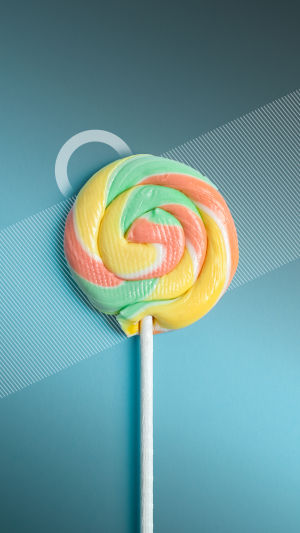A lollipop is a type of candy that is liked by many people. Initially, it was a hard candy attached to a small stick. Later, many more delicious and fun varieties were developed.
Not only do children enjoy lollipops, but some adults who are still young at heart also enjoy them. Types of lollipops include gel candy, hard candy, milk candy, chocolate, and milk and fruit.
In 1958, Enrique Bernat Fugliadoza, the inventor of the world-famous lollipop (lollipop), first introduced this kind of candy with a stick, which turned a barely operating candy company into a loss. surplus.
For some, holding a candy in their mouth, with the candy stick poking out between their lips, has become a trendy and fun sign.
The Spanish family-owned company that makes lollipops produces 4 billion lollipops a year. It has many branches and factories all over the world, employing nearly 2000 people. They produce more than 50 varieties of lollipops, including a spicy lollipop for the Mexican market.
Hard lollipop: The surface of the hard and brittle candy should be bright and transparent, non-stick to the wrapping paper, and free of large air bubbles and impurities. Crispy candies should be white in color or have the color that this variety should have, crisp, non-stick to teeth and paper, and have uniform pores in the section.
Milky lollipop: Colloidal candy should have a smooth surface, delicate and smooth taste, moderate hardness, non-stick to teeth, non-stick to paper, and elastic. The non-colloidal candy has a delicate surface profile, uniform crystallization, no roughness, moderate hardness, non-sticky teeth, and non-sticky paper.
Milkfat lollipop: colloidal candy, smooth surface, delicate taste, lubricated, soft and hard, non-sticky to teeth, non-sticky to paper, good to chew, and free of impurities.
Sandy candy: smooth surface, fine and smooth taste, lubricated, moderate hardness, uniform and fine crystals in section, non-sticky to teeth, non-sticky to paper, non-rough, and free of impurities.
Soft lollipop: Agar-type candy, soft and moderate, not sticky to teeth, no hard skin. Among them, the crystal soft candy is bright and transparent, not soft and slump, and slightly elastic, and the surface of the colorful soft candy is densely covered with fine granulated sugar, which has a uniform refreshing layer, soft and refreshing. The sugar body is translucent, and the sorghum syrup in it is elastic and stretchable and can be retracted to its original shape when it is stretched by half.
Gelatin-type candy: The surface is smooth and delicate, without wrinkling skin bubbles, full of elasticity, and soft in the mouth.
Apart from this, ponds also have certain benefits.
1. Provide energy
Sugar is the main source of energy for us humans. Our heart, brain, central nervous system, red blood cells, and other important tissues and cells need energy from it.
2. Bring happiness
When people eat sugar, the sugar triggers the release of dopamine neurons in the brain. And this neuron stimulates the nerve endings, making people feel happy and happy.
3. Anti-ketogenic effects
The oxaloacetate produced by the metabolism of sugar in the body can combine with the acetyl group produced by the metabolism of fat in the body, and then enter the tricarboxylic acid cycle to completely oxidize the fat. This metabolic effect prevents ketonemia caused by the excessive accumulation of ketones in the body.





